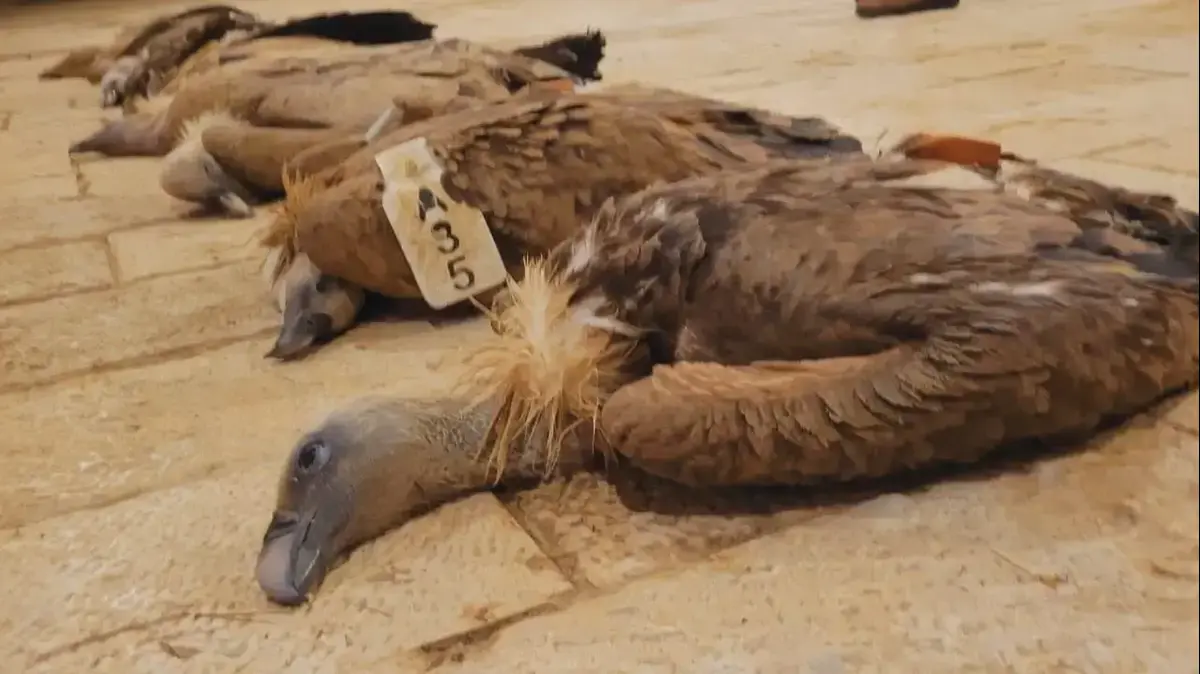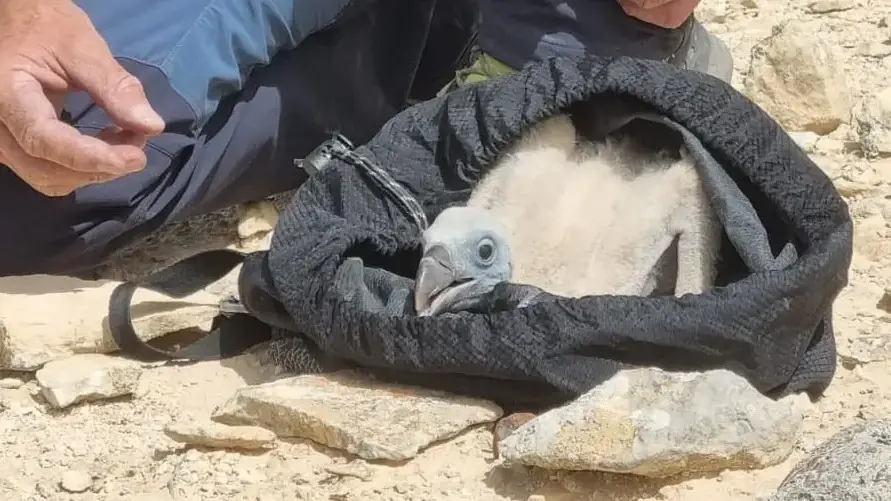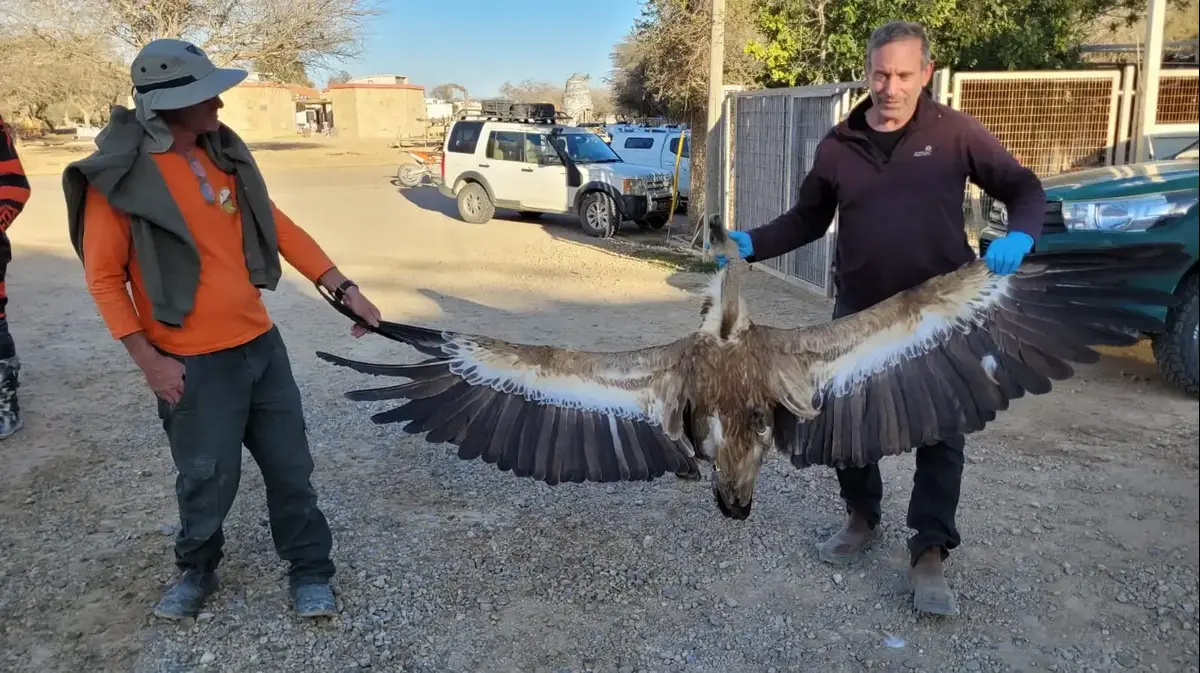By Evan
BushNBC News
Bald eagles, the national symbol of the United States for centuries, are showing widespread signs of poisoning from one of the worst pollutants in the country: lead.
Across the country, bald and golden eagles are continually exposed to the toxic heavy metal, according to research that looked at more than 1,200 eagles from Alaska to Florida.
The study, published Thursday in the journal Science, surveyed eagles in 38 states, testing their bones, feathers, livers and blood for lead.
The researchers found that
46% of bald eagles and 47% of golden eagles had chronic lead poisoning.
[The megadrought in the Western US is the worst in the last 1,200 years and is caused by humans]
"When you look at lead levels in the bones, these birds are exposed to lead repeatedly throughout their lives," said Todd Katzner, a supervising wildlife research biologist with the Geological Survey and the study's principal investigator.
"It's happening over and over again."
A bald eagle hunts a goose in the Bosque del Apache National Refuge, New Mexico, on March 3, 2020. David Zalubowski / AP
The effects of lead - which scientists believe
eagles consume when they eat the remains of animals that were shot to death by
fragmenting lead ammunition inside their bodies - can be deadly to all birds, including eagles.
The resurgence of bald eagles has been hailed as one of America's greatest conservation successes, but the study suggests lead is stunting population growth for both eagle species and could hamper progress.
[Dozens of black axolotls are released in the Xochimilco ecological park in Mexico City]
For golden eagles, whose population is not showing an upward trend, the consequences could be more significant.
“There just isn't much cushion for golden eagles,”
said Viviana Ruiz-Gutierrez, deputy director of Cornell University's Center for Bird Population Studies, who was not involved in the research.
Stamped on the presidential seal and printed on the dollar bill, the bald eagle is ubiquitous in American culture.
However,
by the early 1960s these birds were on the verge of extinction
, with only 417 breeding pairs remaining in the entire country.
It was one of the first species declared in danger of extinction.
Comparison of a copper bullet, on the left, and a lead bullet, on the right, before and after hitting a target.Mike McTee
Through widespread protection, the birds slowly began to recover.
The 1972 ban on DDT, an agricultural pesticide that made bald eagles' eggshells so thin they had a hard time reproducing, was key to their recovery.
In 2007,
the federal government removed the bald eagle from the list of threatened
or endangered species.
“In the last 10 years, bald eagle populations have quadrupled,” Ruiz-Gutiérrez said.
Last winter, the US Fish and Wildlife Service estimated that bald eagle populations had skyrocketed to include
71,400 nesting pairs and more than 316,700 individual birds.
[They use microorganisms native to Antarctica to remove contamination]
Interior Secretary Deb Haaland called the rebound "a conservation success story."
First protected in 1962,
golden eagles have not made such a dramatic turnaround.
Lead's impact on birds of prey, including eagles, has been no secret.
Small regional studies identified places where researchers suspected lead exposure occurred.
Decades ago, research using X-ray technology examined the "piles of guts" left behind by hunters after cleaning their prey.
There they found fragments of lead scattered among the meat.
Eagles often feast on carrion, such as “gut piles” and other debris
X-ray of a dead bald eagle shows ingested lead fragments. The Raptor Center, University of Minnesota
"The lead from the bullets was fragmenting at the food source," said Vince Slabe, a research wildlife biologist at Conservation Science Global, a nonprofit research organization, and lead author of the Science paper.
Still, no researcher had comprehensively analyzed the problem.
[This nature reserve is home to more than 800 bird species in Colombia]
“There has never been an attempt to understand this problem on a continental scale and look at the demographic consequences of that lead exposure,” Katzner said.
Slabe and Katzner organized collaborators across the country, asking them to collect blood samples from live birds caught and banded for research or other purposes.
Planet Earth: Mining is seriously damaging one of the largest rivers in Brazil
Jan. 30, 202201:17
They asked state and federal collaborators to send them the carcasses of the eagles found dead.
They also collected blood from some eagles taken to wildlife rehabilitation facilities.
Lead concentrations in blood, feathers, and tissues such as the liver indicate recent lead exposure.
The researchers found in 620 live bird samples that 28% of bald eagles and 9% of golden eagles had acute lead poisoning.
Concentrations increased in winter, when birds were less likely to find prey and more likely to forage.
[The illegal fishing of totoaba puts the existence of the vaquita marina at risk]
Over time, ingested lead is stored in the bones.
According to the study, almost half of the 448 dead birds whose femurs were analyzed had chronic poisoning.
Older birds had higher concentrations of lead in their bones, suggesting they had multiple, cumulative exposures.
The researchers modeled how poisoning would affect the population growth of these species, finding that lead would reduce the growth rate of bald eagles by almost 4% each year.
Golden eagles would experience a reduction of almost 1%.
It may not seem like much, but in the case of golden eagles, whose population is about 30,000 in the United States, it could make a considerable difference in the trajectory of the species.
“Small impacts can add up over time.
In 20 years, that adds up to thousands and thousands of golden eagles removed from the population,” Katzner said.
The model is conservative and only considers the lethal impacts of lead.
Global impacts could be more significant.
[A protected marine corridor: the Galapagos Marine Reserve is inaugurated]
"If the birds are alive, it can affect almost every system in their body," Slabe said.
“It can cause them to lose their ability to fly or digest food.
It can affect their motor skills,” he noted.
A lead-poisoned eagle admitted to The Raptor Center in Minnesota, a veterinary hospital specializing in birds of prey. University of Minnesota Raptor Center
Lead can be deadly to any bird, although it is a problem that draws more human attention to birds protected by federal law, such as eagles.
“The more you study, the more we find it,” Ruiz-Gutierrez said.
"We're really finding it in bald and golden eagles because they're of legal, federal interest," he added.
[These Colombians make music with garbage to raise awareness]
Scientists consider lead a major obstacle to the recovery of the California condor, the largest bird in the Americas.
In 1991, the federal government banned lead ammunition in waterfowl hunting.
The US Fish and Wildlife Service issued an order in 2017 aimed at preventing the use of lead ammunition on its land.
The Trump Administration reversed that decision less than two months later.
California banned the use of lead ammunition for hunters in 2019.
Some hunting and outdoor groups, such as the Congressional Sportsmen's Foundation, oppose these bans, arguing that the scientific research is not clear enough, that the cost of equipment and ammunition prices would increase and that the outdoor economy would be harmed.
The Science study could reignite the heated debate over the use of lead ammunition.
"It highlights the relationship between lead ammunition and the damage it is causing to our most emblematic bird species, our most emblematic symbol," Ruiz-Gutiérrez said of the study.
"Banning lead ammunition would have an incredible impact on bald and golden eagle populations, as well as other wildlife," he added.








/cloudfront-eu-central-1.images.arcpublishing.com/prisa/KMEYMJKESBAZBE4MRBAM4TGHIQ.jpg)



